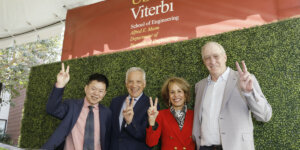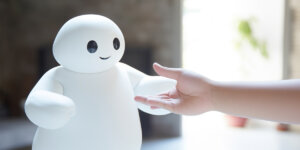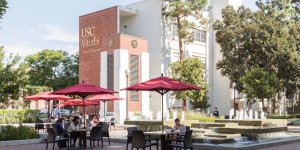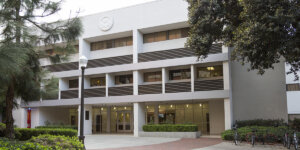
A prototype of Senseer’s implantable device provides microsensing technology for hydrocephalus shunts. Photo courtesy of Alex Baldwin
For parents, worrying about a child’s chronic condition is a nightmare — a cycle of anxious days and sleepless nights. Not to mention, desperate hopes for a new medical discovery – one that helps their beloved ones have better lives.
One such condition is hydrocephalus, a Greek word meaning “water on the brain.” One in every 500 children is born with pediatric hydrocephalus, a condition that causes excessive fluid in the brain, the pressure from which brings on splitting headaches. If left untreated, it can cause brain damage and even death.
Since the 1950s, shunt implants have been used in pediatric patients with hydrocephalus. Shunts are a type of tube that acts as “plumbing” to drain excess cerebrospinal fluid (CSF) from the patient’s brain into their stomach. Unfortunately, the devices are purely mechanical – without sensing capability – and are unable to detect any issues with a patient’s shunt.
Professor Ellis Meng and Tuan Hoang, both of the Department of Biomedical Engineering, thought it high time to invent a “self-aware” device that could inform doctors with a sense of the shunt’s condition in real-time. In 2013, they began research and development.
Four years later, Senseer came to life – a start-up specializing in biomedical devices with patented microsensing technologies for the world’s first-ever multi-sensor “smart” shunt system. Senseer’s CEO Sascha Lee calls the system a “game-changer for patients.”
Meeting a need
Meng, a faculty member of the Michelson Center for Convergent Bioscience, and Hoang, co-director of the USC Coulter Translational Research Partnership Program, often work with doctors to develop solutions for unmet clinical needs. They consulted with pediatric neurosurgeons at Children’s Hospital at Los Angeles (CHLA) to identify the shunt problem. Then, they recruited a team of biomedical engineering PhD students to help develop novel sensor technologies.
“Neurosurgeons mentioned that their greatest ‘pain’ was the diagnosis of hydrocephalus shunt failure, which is inevitable,” Hoang said. “Patient care could be greatly improved while minimizing patient suffering if only there was a fast, reliable and affordable method for timely assessment to guide clinical intervention.”
To make matters worse, Alex Baldwin, a biomedical engineering PhD student and Senseer’s chief technical officer, said that shunts get clogged all the time — often going undiagnosed until patients are in an extreme amount of pain from the abnormal build-up of CSF.
“Forty to fifty percent [of shunts] clog up within the first year after being implanted,” Baldwin said. “And after a decade, 80 to 90-percent of shunts have failed. These patients are almost guaranteed to need at least one shunt revision or more in their lifetime.”
Trevor Hudson, also a biomedical engineering PhD student on the Senseer team, added that some patients need ten shunt revisions, which are corrections or replacements of a failed shunt, within the first year.
What’s more is the significant delay and expense patients incur to diagnose if their shunt has failed. On the surface, it can be hard to differentiate shunt failure from other ailments with the same symptoms, like the flu. Baldwin says that current diagnosis can take multiple brain scans over several months and an invasive procedure called a “shunt tap.”
A “Self-Aware” Solution

The Senseer team, from L-R: Tuan Hoang, Ellis Meng, Alex Baldwin, Trevor Hudson, Sascha Lee and Eugene Yoon. Photo courtesy of Senseer
The team developed a suite of sensors to measure three different parameters in the shunt: pressure, flow and occlusion, or blockage — all of which could alert a clinician prior to shunt failure. Senseer’s Eugene Yoon, also a biomedical engineering PhD student, is currently working to make the pressure sensor more accurate and up to physician standards. The flow and blockage sensors are now being validated in tests at CHLA.
“Having all these sensors adds a lot of redundancy and gives patients peace of mind,” Yoon said.
Senseer’s vision: to store clinical data from the device in a database cloud and give doctors access. If the self-diagnosis detects one or more parameters going too far out of whack, doctors may be alerted to assess the data and follow-up with patients as necessary.
“People have tried over the course of many decades to make shunts that don’t fail, but because there’s no data from the body to inform the designs, no one has succeeded,” Meng, the Dwight C. and Hildagarde E. Baum Chair, said. “I’m hoping we can provide doctors with data on when the shunts fail and that some of this data will be useful in designing shunts that don’t fail at all in the future.”
So far, the Senseer team has completed prototypes for all of the sensors. A clinical study is underway that utilizes two sensors in an external ventricular drain, which is a short-term shunt for trauma patients that drains fluid outside the body so it can be discarded. Baldwin says next steps are to package the sensors in an implantable form and manufacture the wireless devices to work toward human trials.

Sensors packaged for tests at CHLA. Photo courtesy of Alex Baldwin
Looking to the future
Yoon points out that hydrocephalus has two main patient populations: pediatric and normal-pressure. The latter is a neurodegenerative disease that affects adults typically aged 60 and older. Senseer’s multi-sensor technology could be used in both populations.
“Normal-pressure hydrocephalus is a very under-diagnosed condition currently,” Hudson said. “The patient population is expected to keep growing as there’s more visibility to it.”
Baldwin hopes the growing awareness continues to clear up some misdiagnoses of dementia when the patient is actually suffering from normal-pressure hydrocephalus. Added Baldwin, “These patients who have been misdiagnosed can sometimes barely walk and get a shunt in, and for a decent number of them, they go back to normal.”
Long-term, Hoang said that Senseer wants to deploy their microsensor technologies to upgrade other implantable devices into self-aware theranostic systems that improve therapies and patient care.
Accolades and support
For their work, Senseer’s student researchers were selected by The National Academy of Inventors® (NAI) to participate in the 2018 Student Innovation Showcase at the Seventh Annual NAI Conference in Washington D.C this April. They are one of only six student teams in the nation to receive this honor.
Senseer was also a finalist in the 2018 Maseeh Entrepreneurship Prize Competition (MEPC), an annual contest run by the USC Viterbi School of Engineering to address the “Grand Challenges” identified by the National Academy of Engineering (NAE). The topics span energy, health, safety, education and the environment. During the contest, MEPC mentors and guides all teams through additional customer discovery and market analyses.
The research team collaborated with Dr. Gordon McComb, Dr. Mark Krieger and Dr. Eisha Christian of the clinical neurosurgery department at CHLA and Dr. Frances Richmond and Dr. Michael Jamieson from the USC Regulatory Science Program. Funding has been provided by grants from the National Science Foundation (NSF), the Food and Drug Administration (FDA)-funded Consortium for Technical Innovation (CTIP) at USC-CHLA, the USC Coulter Translational Research Partnership, the NSF-funded Innovation Corps (I-Corps) Node, HTE Edge, the Rudi Schulte Research Institute, and the USC Viterbi Mousetrap Fund.
Published on April 12th, 2018
Last updated on May 2nd, 2022












